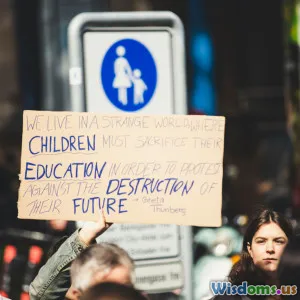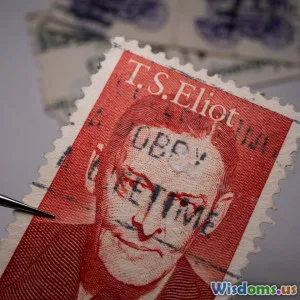
Forecasting the Future of Secret Societies in a Transparent World
8 min read Explore how secret societies adapt and survive amid growing transparency and digital scrutiny. (0 Reviews)
Forecasting the Future of Secret Societies in a Transparent World
Secret societies have long held a captivating allure, shrouded in mystery and cloaked behind layers of secrecy. From ancient brotherhoods like the Freemasons to modern clandestine groups, their reputation as keepers of concealed knowledge and hidden agendas has fascinated enthusiasts and researchers alike. Yet, as the world rapidly shifts towards unprecedented transparency—through technological advances, social media proliferation, and cultural demands for openness—the very essence of secret societies is under pressure. How will these age-old organizations navigate a future where secrecy is increasingly elusive?
The Historical Role of Secrecy and Influence
Historically, secret societies flourished because of their exclusive access to rituals, knowledge, networks, and social capital. They operated in shadows to protect sensitive information, shape political outcomes, or preserve traditions without public scrutiny. For instance, the Illuminati of the 18th century aimed to influence political enlightenment while maintaining their inner workings confidential. The Freemasons provided not only a social framework but also a clandestine platform for philosophical and political discourse during eras of censorship.
The power of such groups stemmed largely from their inaccessibility: membership was selective, and communication internal. This secretive insulation allowed them to exert influence discreetly—a tactic that eventually inspired both admiration and conspiracy theories.
The Rise of a Transparent Society
Digital Revolution and Information Availability
The digital age has transformed information into a globally accessible commodity. Social platforms like Twitter, Facebook, and Instagram enable instantaneous sharing of data—be it political secrets, social movements, or corporate misdeeds. WikiLeaks and platforms such as Anonymous showcase the power of transparency champions, often exposing elite secrets that would have remained hidden in prior generations.
Simultaneously, governments and institutions increasingly adopt policies of open data and transparent decision-making. International organizations and watchdog groups advocate for accountability, reducing room for covert power plays.
Challenges to Traditional Secrecy
The mechanisms that once guaranteed confidentiality—discrete meeting spots, invitation-only correspondence, and face-to-face initiation rituals—grow less effective in an era where leaks can reach millions within minutes. For example, the Panama Papers leak dismantled a veil of secrecy around offshore finance, demonstrating how easily confidential information can be compromised.
Consequently, secret societies face intensified scrutiny from journalists, hackers, and curious public eyes with sophisticated surveillance tools.
How Secret Societies are Adapting
Embracing Digital Opacity and Cybersecurity
Rather than resisting transparency entirely, some secret societies harness new technology to reinvent their secrecy. Encrypted communication apps like Signal or ProtonMail enable covert exchanges beyond traditional methods. Blockchain can create immutable, anonymous membership ledgers.
Organizations reportedly use decentralized networks to obscure their structure while maintaining robust coordination, balancing operational security with necessary connectivity.
Symbolism and Cultural Preservation Over Conspiracy
With less ability to hide their very existence, many groups pivot towards emphasizing symbolic identity and cultural tradition. Public-facing Masonic lodges emphasize community service, demystifying their image without betraying internal rituals.
This trend suggests a strategic shift: secrecy applied more to heritage and ceremony than grand political power plays.
Smaller, More Selective Memberships
Increased exposure risks push some societies to limit recruitment to trusted circles, focusing on quality over quantity. Smaller membership enables tighter control, less chance of infiltration or inadvertent secrecy leaks.
Hybrid Models: Transparency Where Possible, Secrecy Where Essential
Some groups publicly disclose aspects of their mission or values, while safeguarding core rituals. For example, Odd Fellows openly promote philanthropy, but maintain closed ceremonies.
This pragmatic approach recognizes modern expectations while preserving mystique.
Future Scenarios for Secret Societies
Scenario 1: Transformation into Open Societies
Some may fully embrace transparency, transforming into advocacy or cultural organizations focused on societal benefit, shedding secrecy to optimize influence via credibility.
Scenario 2: Technological Stealth Enhances Secrecy
Advanced cryptography and AI-driven privacy tools could enable entirely new forms of hidden networking beyond current detection. The future may witness societies operating almost undetectably.
Scenario 3: Decline and Absorption
Unable to adapt, traditional secret societies risk fading relevance or absorption into mainstream organizations with diluted exclusivity.
Scenario 4: Rise of Digital Secret Societies
Digital natives may form cryptic, decentralized groups with no geographic or physical boundaries, blending secret society ethos with virtual space dynamics.
Expert Perspectives
Dr. Emily Turner, a sociologist specializing in clandestine groups, notes: "The persistence of secret societies depends less on hiding facts and more on cultivating a sense of exclusivity and identity. Transparency challenges the old models but doesn’t necessarily doom secrecy itself—just its traditional forms."
Cybersecurity expert Michael Chen adds: "Encryption and blockchain revolutionize privacy. Secret societies willing to leverage these tools will thrive, potentially creating new underground networks that are more resilient and opaque than ever before."
Conclusion
The future of secret societies in our transparent world is neither guaranteed obsolescence nor perpetual mystery. It is a dynamic interplay between exposure and concealment, tradition and innovation, openness and guardedness. As societies demand greater accountability, secret organizations reinvent their modes of operation, often turning technological advances to their advantage.
In a paradoxical twist, transparency doesn't force the death of secrets—it transforms them. For those fascinated by such organizations, understanding their evolution encourages a more nuanced view beyond cliché conspiracy tales. Secret societies will likely survive, not by resisting the light of transparency, but by learning to cast nuanced shadows within it.
References & Further Reading:
- "The History and Influence of Secret Societies", Journal of Secret History, 2021.
- Snowden, E. (2019). Permanent Record. Metropolitan Books.
- Turner, E. (2022). "Secrecy’s Evolution in Digital Age", Sociology of Hidden Networks Symposium.
- WikiLeaks Archive: https://wikileaks.org
- Chen, M. (2023). "Cybersecurity and the Rise of Digital Secret Societies", IEEE Privacy Journal.
Rate the Post
User Reviews
Popular Posts





















